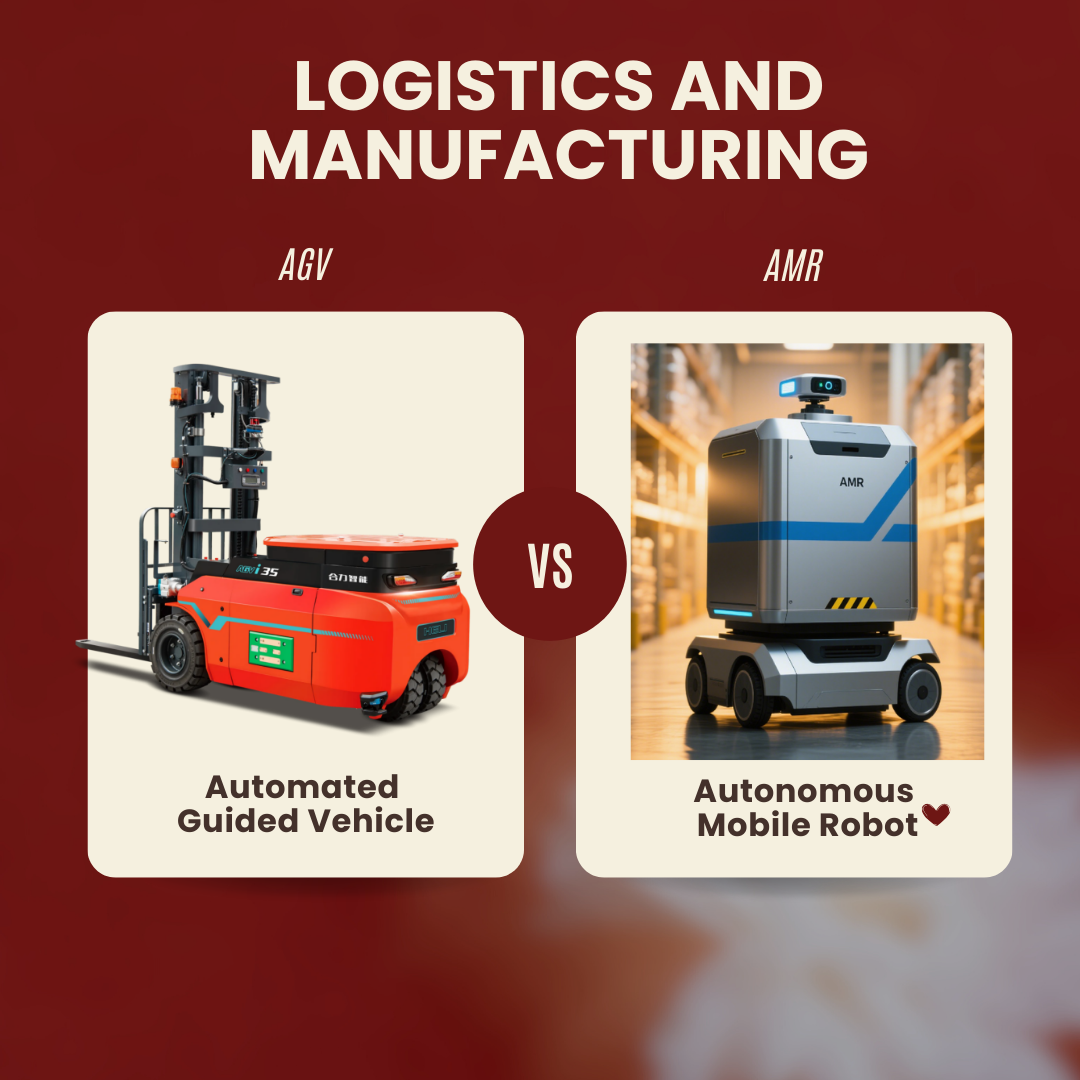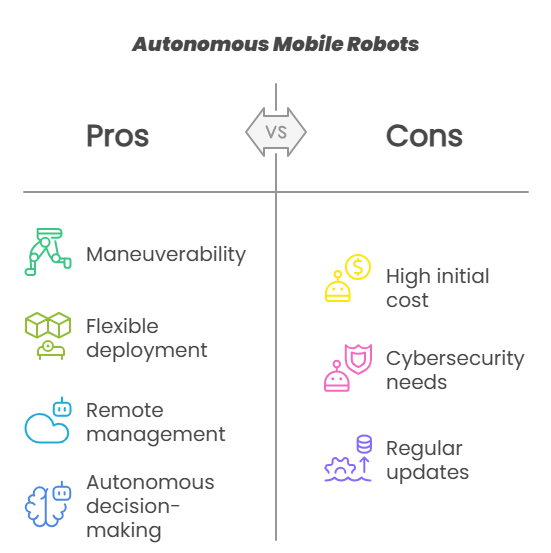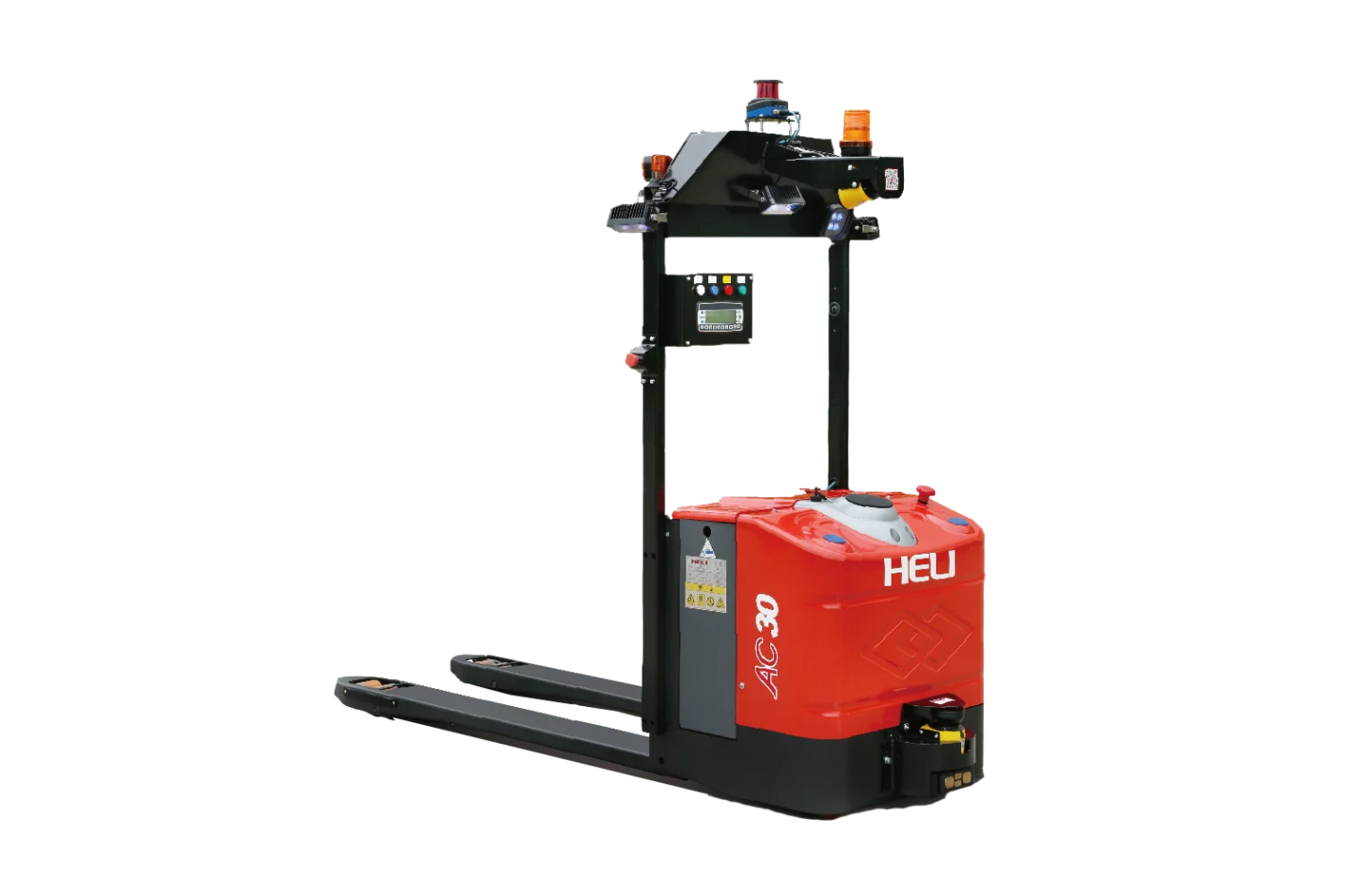AGV vs. AMR: What Are the Differences?
AGVs use fixed guidance systems, including wires or magnetic tape, and utilize central traffic control. AMR autonomous mobile robots integrate sensor fusion, machine learning, and active path planning to autonomously map their environments.
Both are indispensable in contemporary logistics and manufacturing, yet they differ in flexibility, scalability, and infrastructural requirements. The pace of warehouse automation requires businesses to evaluate software integration, fleet orchestration, and safety factors before selecting between AGV vs. AMR.
What is Automated Guided Vehicle? Pros and Cons
AGVs (Automated Guided Vehicles) transport goods efficiently along fixed routes, relying on magnetic stripes, laser reflectors, or ground sensor lines for navigation. Their paths are controlled by a centralized system, and adjustments require physical modifications to the guidance facilities, making them less flexible. However, automatic guided vehicle forklifts excel in stable production environments and are particularly suited to repetitive, high-precision logistics tasks.
Advantages and Disadvantages of Automated Guided Vehicles
AGVs operate continuously without needing much supervisory input from operators. These machines execute repetitive tasks with accuracy, thus making them appropriate for heavy tasks such as pallet and raw material transport in manufacturing assembly lines. Legacy manufacturing equipment runs with AGVs, and they automatically eliminate workplace human errors.
The route reprogramming procedure for AGV systems demands that old floor guidance be rewired or re-laid, thus leading to disrupted operational workflows. The sensors and tape alignment systems used by AGVs need to function within tight parameters because any misalignment or skew will stop operations. The set routes that they follow expose the devices to non-navigable obstacles that cannot be avoided.
The analysis of “AGV vs. AMR” shows that AGVs function best in stable conditions but lack the ability to adjust to immediate modifications.
What is Autonomous Mobile Robot? Pros and Cons
AMR autonomous mobile robots dynamically avoid obstacles and adjust their path in real time through LIDAR, 3D cameras, and AI navigation. They do not require fixed markers and utilize SLAM algorithms to autonomously build maps and adapt to changing production environments. The modular design supports flexible deployment, and cloud management enables remote monitoring, predictive maintenance, and intelligent task assignment.
Advantages and Disadvantages of Autonomous Mobile Robots
AMRs offer maneuverability. They can move through tight areas, followed by an automatic mechanism to create new paths in case their accustomed route becomes obstructed. The equipment needs little structural transformation to cut deployment duration and expenses across the extended timeline. The fusion systems installed on these platforms demonstrate sensitivity to low light conditions, dust accumulation, and network delays during cloud processing.
However, customers must pay higher initial prices to obtain their combination of advanced equipment components and software programming. AMR technology demonstrates superior autonomous decision capacity as well as adaptability during discussions that compare AGV vs. AMR. Formulations based on AI for navigation might demand exhaustive cybersecurity systems. They also need regular software updates to improve path-planning algorithms and secure operation.
Key Differences between AGVs and AMRs
Here is a comparison between AGVs and AMRs for better understanding:
Parameter | AGVs | AMRs |
Navigation | – Follow fixed paths using floor markers or wires. | – Use sensors (LiDAR, cameras) and mapping algorithms for route planning. |
– Need dedicated infrastructure or tracks. | – No need for dedicated physical tracks. | |
Flexibility | – Changing routes or layouts can be time-consuming and costly. | – Easily adapt to new or changing layouts. |
– Best for predictable, repetitive tasks. | – Can manage complex routes and active environments. | |
Cost | – Lower upfront cost for very stable, fixed-path operations. | – Higher initial investment owing to sensors and software. |
– Higher infrastructure expenses (tracks, floor modifications). | – Lower infrastructure costs; quicker to scale. | |
Intelligence | – Limited autonomy. | – A higher level of autonomy and real-time decision-making. |
– Depends on external guidance systems and predefined paths. | – Can detect and avoid obstacles on the fly. |
AGV vs. AMR: Which One is Right for Your Business?
Consider your facility’s flexibility, material flow complexity, and system integration. Structured automotive and heavy manufacturing plants suit AGVs. Wire or magnetic guiding guarantees uptime where pathways seldom change.
AMRs are ideal for dynamic e-commerce fulfillment centers, consumer product manufacturing, and hospitals that need variable routing, SLAM-based navigation, and rapid layout reconfiguration.
Further, consider sensor fusion, fleet management software interoperability, and traffic control for fluctuating loads, mixed traffic, and safety. Assess battery management, charging station location, and flexible software interfaces for scheduling and route optimization.
The “AGV vs. AMR” selection should rely on how predictable your operations are, how frequently you modify processes, and how important accurate positioning is for your industry’s throughput, inventory management, and scalability.
Anhui Heli: Reliable AGV Solutions Provider
As a leading forklift manufacturer, HELI specializes in accurate material handling solutions and provides customers with high-performance and highly reliable AGV products.
Our 1.5-3t Pallet Truck AGV stands out as a good choice to upgrade your logistic systems. Its features include:
- Precise point-to-point transfer
- High-accuracy servo system
- Compact structure to maximize space through decreased aisles
- Suitable for ground-level warehouses and manufacturing lines
Still debating AGV vs AMR? Discover HELI’s high-performance AGV solutions – the reliable choice for stable, high-volume material handling.




